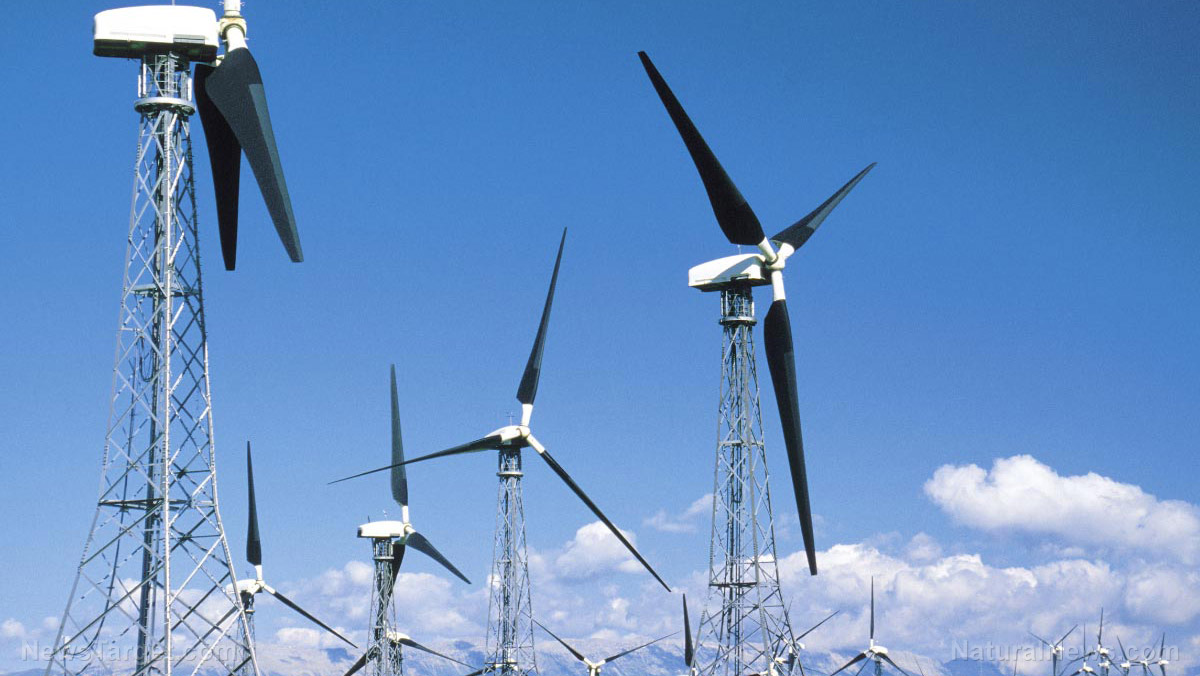Europe is ALL IN for renewable energy: They are planning to build an artificial island in the North Sea to support the world’s largest wind farm
01/09/2018 / By Zoey Sky

By 2027, an artificial island in the North Sea could soon be providing renewable energy for at least 80 million individuals in Europe.
Dubbed the “North Sea Wind Power Hub,” the artificial power island will house “a small team of permanent staff.” The island will send electricity via long-distance cables to Britain and the Netherlands, and will also power Denmark, Germany, Norway, and Belgium.
The island could be built along Dogger Bank, which is located 78 miles (m) (125 km) off the coast of East Yorkshire coast. The “potential shallow and windy” location could be the site for the £1.3 billion ($1.75 billion) project, which would have its own “buildings for staff housing, an airport, a small network of roads, green spaces, and even an artificial lake.”
TenneT, a Dutch power grid operator that will back the project, recently issued a report which claims that the artificial island is going to be “billions of euros cheaper than conventional wind farms and international power cables.” Tennet believes that the North Sea Wind Power Hub will be an ingenious way of making offshore wind power more affordable because the available space by the coast will be filled up. Turbines will then be driven to “more expensive spots further out to sea.”
Rob van der Hage, the manager of TenneT’s offshore wind grid development program, shares that the industry’s dedication to continuing on with this “cost reduction path” is crucial. He added, “The big challenge we are facing towards 2030 and 2050 is onshore wind is hampered by local opposition and nearshore is nearly full. It’s logical we are looking at areas further offshore.”

Dogger Bank, which is about 15 to 36 meters deep, is shallow enough that it could possibly reduce the cost of the challenging project. However, the island will require a costly and enormous network of underwater cables, and it will need at least two to 2.3 square miles (sq mi) (five to six square kilometers [sq km]) of land to accommodate the equipment required to run it.
The plans for the island were drawn by energy companies from Denmark, the Netherlands, and Germany, such as Energinet, a Danish state-owned energy operator. Talks with the energy companies and industrial partners who will finance the project are ongoing.
The roadmap for the artificial island will be published this year in the Netherlands. Once successful, the island could be operational by 2027. Van der Hage adds that the wind farms will follow.
The power hub, which is based on a “hub and spoke principle,” was designed so it could help the European Union (EU) “meet targets for cuts in its carbon dioxide emissions.” Peder Østermark Andreasen, Energinet’s CEO, revealed that the project can spearhead a “further reduction in prices of grid connections and interconnections.” (Related: Huge turning point for renewable energy: Solar power is becoming the cheapest form of new electricity.)
Meanwhile, TenneT announced its wish to improve partnerships between the Netherlands and Germany. Plans for the island include five gigawatts of new offshore turbine farms that TenneT will provide infrastructure for.
In a statement, TenneT CEO Mel Kroon shared, “The ongoing coupling of the European energy markets will lead to more convergence of electricity prices in the various European countries, and will make electricity more affordable for end users.”
The pros and cons of wind energy
If you have the resources to purchase a wind turbine for home use, you could enjoy some of the pros of this particular kind of renewable energy, such as:
- Wind energy is clean, and harnessing wind energy doesn’t produce harmful by-products.
- Wind is free and it is also 100 percent renewable.
- Even though wind turbines are expensive, they pay for themselves after a few years.
- Power companies will even pay you back if you produce extra electricity.
- The local or federal government may offer tax incentives for those who install wind turbines in their property.
Read more articles about the benefits of renewable energy at Power.news.
Sources include:
Submit a correction >>
Tagged Under:
This article may contain statements that reflect the opinion of the author





















